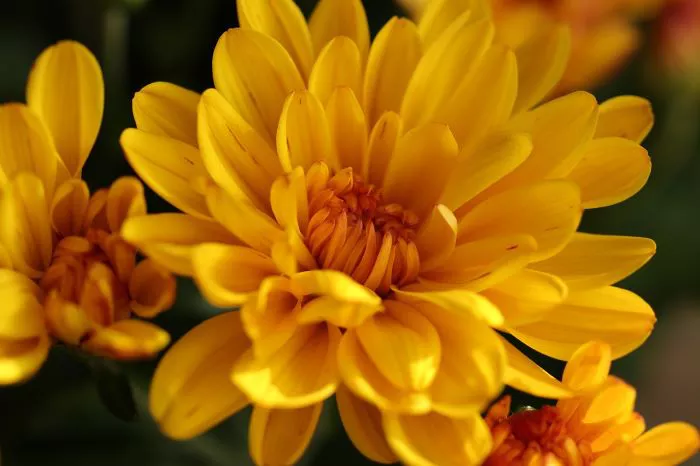Marigolds are among the most popular and recognizable flowers in gardens around the world. Known for their bright and cheerful colors, marigolds are not only beautiful but also versatile. This article explores what type of flower is marigolds, the characteristics of marigolds, their types, growing conditions, and uses, providing a comprehensive understanding of this beloved flower.
Botanical Classification
Marigolds belong to the genus Tagetes, which is part of the Asteraceae family, commonly known as the daisy family. This family includes a wide variety of flowering plants, many of which are cultivated for their ornamental value. Marigolds are native to the Americas, particularly Mexico and the southwestern United States. They have been cultivated for centuries, both for their beauty and their practical uses.
Types of Marigolds
There are several species of marigolds, but the most common types grown in gardens include:
African Marigold (Tagetes erecta): This type is known for its large, fluffy blooms and tall stature. African marigolds can grow up to 3 feet tall and produce large flower heads that can be up to 5 inches in diameter. They are often used in formal gardens and are popular for their vibrant yellow and orange colors.
French Marigold (Tagetes patula): French marigolds are smaller and more compact than African marigolds. They typically grow to about 6 to 18 inches tall and have a bushy appearance. French marigolds come in a variety of colors, including yellow, orange, and red, often with bi-colored petals. They are commonly used in borders and containers.
Signet Marigold (Tagetes tenuifolia): Signet marigolds are smaller and have delicate, fern-like leaves. They produce small, single flowers that are often yellow or orange. This type is known for its pleasant fragrance and is often used in culinary dishes. Signet marigolds typically grow to about 12 to 18 inches tall.
Physical Characteristics
Marigolds are characterized by their vibrant flowers, which can range from bright yellow to deep orange and even red. The flowers are typically composed of numerous petals arranged in a circular pattern, creating a dense and full appearance. The leaves are usually dark green, deeply lobed, and have a slightly sticky texture.
The roots of marigolds are fibrous and can help improve soil health. They release compounds that suppress certain soil-borne pests and diseases, making them beneficial for companion planting.
Growing Conditions
Marigolds are relatively easy to grow and thrive in a variety of conditions. They prefer full sun, which means they should receive at least six hours of direct sunlight each day. Marigolds are tolerant of drought but perform best with regular watering. It is essential to allow the soil to dry out between waterings to prevent root rot.
Marigolds prefer well-drained soil with a pH level between 6.0 and 7.0. They can adapt to different soil types, including sandy and clay soils. Adding organic matter, such as compost, can enhance soil fertility and improve drainage.
Planting Marigolds
Marigolds can be grown from seeds or purchased as young plants from nurseries. If starting from seeds, they can be sown directly in the garden after the last frost date. For earlier blooms, seeds can be started indoors six to eight weeks before the last frost. When transplanting, ensure that the young plants are spaced adequately to allow for their mature size.
When planting marigolds, consider their companion planting benefits. They can be planted alongside vegetables like tomatoes, peppers, and cucumbers to deter pests such as nematodes and aphids.
Uses of Marigolds
Marigolds have a wide range of uses beyond their ornamental value. They are often used in:
Gardening: As companion plants, marigolds help protect vegetables from pests and improve soil health.
Culinary Applications: The petals of some marigold varieties, especially signet marigolds, are edible. They can be used to add color and flavor to salads, soups, and garnishes.
Medicinal Uses: Marigold extracts, particularly from Calendula officinalis (often confused with marigolds), are known for their anti-inflammatory and antiseptic properties. They are used in creams and ointments for skin healing.
Crafts and Decorations: Dried marigold petals are used in potpourri and as natural dyes for fabrics. Their vibrant colors make them popular in floral arrangements and crafts.
Conclusion
Marigolds are a diverse and valuable group of flowers that bring beauty and functionality to gardens and landscapes. Their bright colors, ease of care, and numerous uses make them a favorite among gardeners and flower enthusiasts. Whether used for pest control in vegetable gardens, as a culinary ingredient, or simply as a stunning addition to floral arrangements, marigolds are a flower worth growing and appreciating. Understanding the different types of marigolds and their characteristics allows gardeners to make informed choices and enjoy the many benefits these flowers offer.


